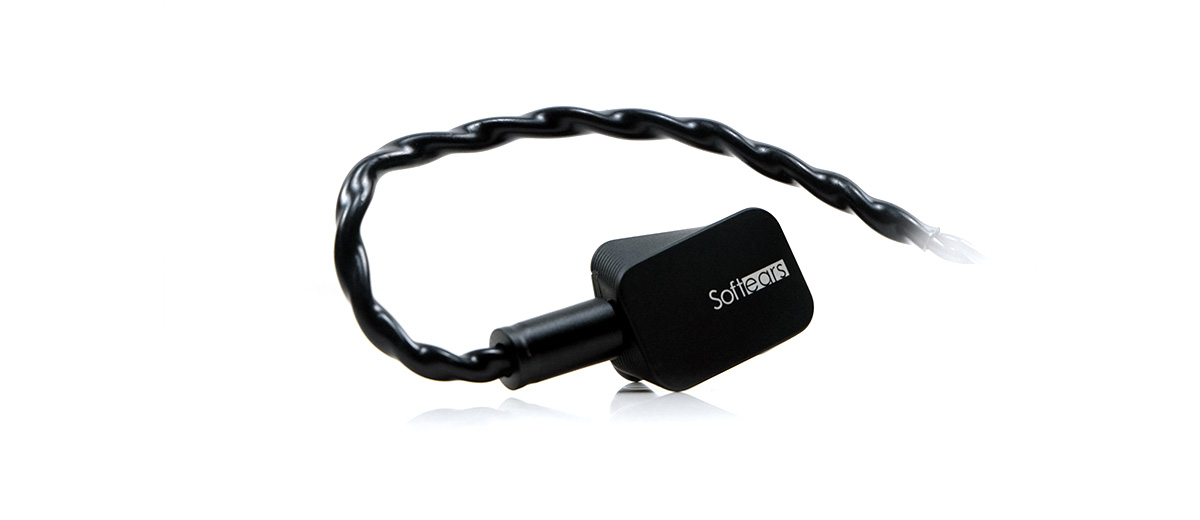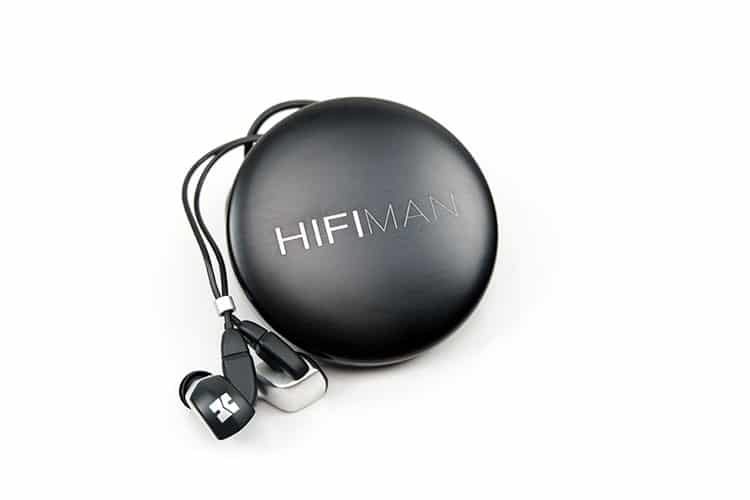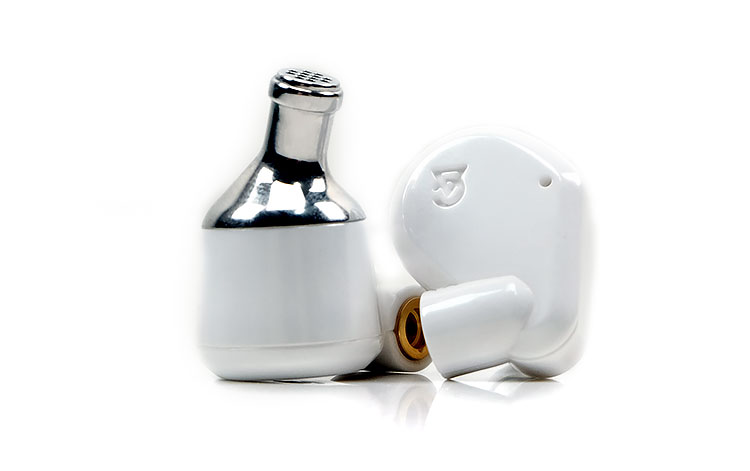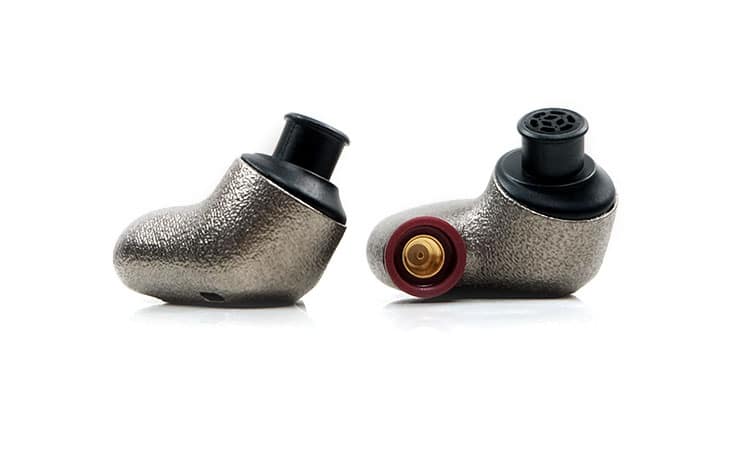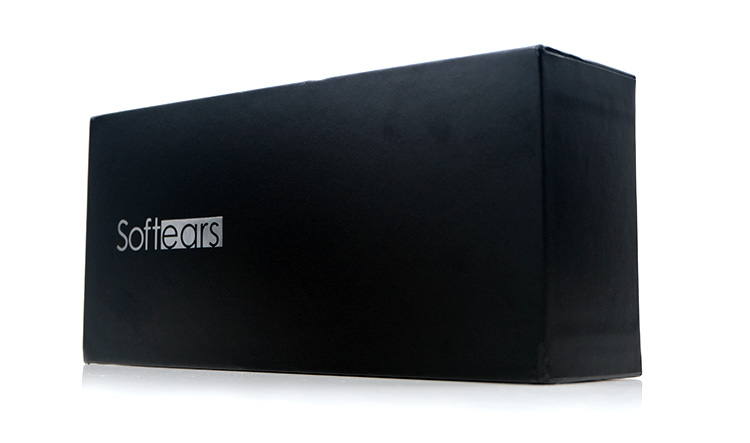Select Comparisons
All select comparisons were completed using a Lotoo PAW Gold Touch and HiBy’s RS8 as sources. In all instances, the stock tips and cables of each IEM were used rather than aftermarket.
HIFIMAN RE2000 Silver Edition
$799
The original RE2000 came out at around $2000, and the Silver Edition was launched originally at $1500 but seems to have stabilized at $799 for the last year or two. You can read our full review of the RE2000 Silver Edition here.
Technical
Like the Twilight, the RE2000 SE is a single dynamic driver universal IEM. The implementation does differ as you would expect with HIFIMAN using a 9.2mm topology diaphragm driver which is just slightly smaller than the DLC dome 10mm dynamic driver inside the Twilight.
The thrust of Topology from HIFIMAN is the amount of control the company can exert on the final tuning while keeping distortion levels low. This is a nano-particle coating on the diaphragm with geometric patterns and thickness the performance of the driver in terms of sound can be altered also.
There is less information though on acoustical venting for the RE2000 SE which is where Softears places a lot of emphasis on with its rear cavity design and aggressive porting on the shells. Distortion control on the RE2000 SE seems more centered on the benefits of nanotech on the driver diaphragm than an exposition on the venting.
At 60Ω and 103dB, the RE2000 SE is also far less efficient on paper compared to the Twilight which is a more manageable 16Ω and 116dB @1kHz SPL. The RE2000 SE will scale with more power, and it needs more power for sure.
That does not preclude the Twilight from sounding more dynamic with power either. In our real-world test using the low gain balance output of the PAW Touch Gold, the Twilight easily got to a suitable volume level long before the RE2000, (about 15 steps), but both did not feel overly sensitive to minor volume adjustments either.
Design
The RE2000 SE adopts a similar design language to the Twilight in the sense that they both have quirky designs with perpendicular body and nozzle relationships.
Except with the RE2000 SE, the long protruding connector stem is in the middle of the shell so it sits horizontally whereas the Twilight is vertically worn with the connector position at the top.
Still, it is not hard to see some of the overlaps even if the final finishing is quite different. Both use an aluminum alloy though the harmony of materials on the HIFIMAN design feels a little more disjointed with that big black plastic stem coming up from the metal body.
The two-tone black and silver anodized finish on the main shell is well done though not quite as sleek and low profile as the all-black of the Twilight. I will give props to HIFIMAN for the curving on the RE2000 SE, it makes it a very smooth IEM to hold.
The Twilight is fairly smoothly finished but not quite as, though I would argue the rectangular look creates a very unique visual.
The main drawback is the RE2000 SE fitting with a very short nozzle meaning you have to use a long tip to get the seal and performance just right. It is a comfortable fit due to the lighter aluminum alloy.
However, it’s not the best for passive isolation if the tips are not up to par. I generally use the stock double flange tips for the best depth on insertion but the background noise is high from the more porous tip material.
The Twilight is not the best either for passive isolation but the nozzle is much longer and requires less tip rolling and experimentation to get a comfy and secure fit.
Performance
The RE2000 SE is more of a mild v-shaped response curve with a warmer timbre as opposed to the Twilight which is, save for some additional mid-to-upper bass presence, tuned a bit closer to the Harman Target curve.
The RE2000 SE low-end is much more elevated and dominant in the mix and with also a slightly stronger upper treble presence also. The Twilight is comparatively flatter on the sub-bass and though boosted from 100Hz and into the lower mids to around 500-600Hz it is nowhere near as elevated as the equivalent frequency region in the HIFIMAN tuning.
That means more warmth, and more ‘pillowy-sounding’ bass but also a slower decay for my money, and not quite as tight and well-controlled as the Twilight bass performance.
The Twilight has some mild upper treble 8-10k peaking but upper-mids to lower treble up to around 7-8k is a little south of neutral. Whereas the RE2000 SE’s 7-8k region has a fairly narrow but more prominent spike. There is some dipping in its lower treble also pm on the HIFIMAN but for percussion presence, it offers a bit more sparkle.
That being said, the overall clarity of the Twilight mids is much better. It has more space to breathe with that higher bass delivery and a stronger vocal presence with better imaging around and behind for acoustical arrangements.
The RE2000 SE does well for female higher pitching vocals but the elevated bass presence drowns out rock vocals resulting in a staging quality that for me is a bit congested sounding and narrower in its arrangement.
Campfire Audio Vega 2020
$899
The Vega 2020 was launched in 2020 and is a refresh of the original Vega dynamic driver IEM from 2016. You can find our full review of the Vega 2020 here.
Technical
The Vega 2020 has a common theme with the Twilight in that both IEMs use 10mm single dynamic drivers and both have DLC-type diaphragms.
The subtle difference on paper is in Vega 2020’s A.D.L.C. abbreviation rather than DLC which stands for amorphous diamond-like carbon. That might seem like a variant but in essence, most DLC composites are amorphous so in terms of substance, it’s more or less the same.
Both companies stress each IEM’s internal acoustical space advantages. Perhaps more so Softears though the application on both is much the same with a rear venting airflow design and an additional acoustic dampener to regulate that airflow as well as maximize the sensitivity of the driver.
The Vega 2020 has a slightly higher impedance rating compared to the Twilight at 36Ω compared to 16Ω but overall, both IEMs will drive just fine from most modern DAPs. Where there is less certainty on paper is the SPL levels @1kHz due to Campfire using a Vrms scale to hit a benchmark of 94dB @1kHz which is a bit different from a traditional format.
In our Vega 2020 review, we assumed it was hitting around 105dB SPL @1kHz when compared to the older and less efficient Vega rated at 102dB SPL. We might be wrong though if the Twilight is rated at 116dB SPL @1kHz.
I say that because, in our real-world test comparing the Twilight and the Vega 2020 out of the HiBy RS8 on a low-gain SE output, I actually found the Vega 2020 to be the louder of the two by about 4-5 steps when attempting to volume match.
Design
It may not look like it due to the different sizes, colors, and finishing, but in actual fact, these 2 IEMs share a very similar design with a flat front-facing plate with narrow depth and a main driver shell and nozzle running perpendicular to that plate.
The rest is quite different, however. The Vega 2020 is much smaller, built with ceramics as opposed to aluminum alloy, and uses MMCX terminations located on the side as opposed to 2-pin 0.78mm on the top. It is also very smoothly finished in white whereas the Twilight, though also beautifully finished, is much more angular and stealthier with its black shells.
I also give brownie points for the Vega 2020 fit. Its diminutive size does place emphasis on the tips you use much like the Twilight but its fitting style combined with that petite smooth form factor does mean it can get closer to the ear canal opening meaning the tips seal a bit better. They also come with Final E tips which are excellent for seal, comfort, and performance.
The Twilight is comfortable but does not isolate as well and though I found a comfortable fitting with the single-flange silicone tips they never adapted quite as well to my canal as the Final E tips. I suspect I might use Final E on these for casual listening purposes.
Both have decent 4-core cables bathed in black but with very different handling properties and terminations. The Twilight is a 1.2m 6N OFC cable with 2-pin terminations and terminated with a 4.4mm balanced plug. It’s loosely braided, with some excellent creative flair in the splitter barrel design, and comes with an additional 3.5mm SE piggy-tail adaptor.
The Vega 2020’s 1.32m SE 3.5mm CA Litz cable is very low profile and looks less flashy compared to the Twilight stock cable. However, it’s much lighter, twisted instead of braided, and offers excellent low microphonics and easy handling. I just wish it came with a 4.4mm termination option.
Performance
Contextually, the Twilight is much less colored sounding compared to the thunderous wall of bass that is the Vega 2020. In its own right, I would describe the twilight as pushing to the slightly warm and smooth side but compared to the Vega 2020 it’s more tonally accurate and balanced sounding.
The Vega 2020 is V-shaped, possibly even closer to L-shaped with a huge forward-sounding sub-to-mid-bass presence, plenty of warmth traveling up into the instrumental and most vocal timbre, and offset by some elevated 5-8k treble sparkle.
It sounds messy with most male vocal rock struggling for air but sounds stronger with sparse vocal/bass-centric modern R’n’B and dance music. You get a fairly strong synth bass fundamental and plenty of depth from the Vega 2020. If vocals pitch around 1-2k it’s relatively clear with what seems to be a minor boost in that region of the FR.
The Twilight controls the bass better for me. However, it’s far less blood and guts or bloom so bassheads should opt for the Vega 2020. The payoff is that the Twilight low-end tuning allows the mids to breathe. This produces a superior imaging experience and a more open sound for rock classics and male vocals.
Because there is a broader and stronger 1-3k boost the Twilight vocal presence is more intimate and slightly cleaner also. Imaging is stronger on the Twilight as is midrange clarity and generally the layering of the bass is more distinct up to the mids.
You might get a little more upper treble sparkle on the Vega 2020 but that’s more of a counter to the thicker, warmer low-end tuning so it’s not pervasive or as bright sounding as you might expect.
Sennheiser IE 600
$699.95
The Sennheiser IE 600 was launched in 2022 and is part of a wider refresh of the company’s IEM lineup with include the IE 200, IE 300, and the flagship IE 900. You can find our full review of the IE 600 here.
Technical
As with the other compared IEMs, the IE 600 is a dynamic driver IEM but instead of the Twilight 10mm size, we have Sennheiser’s own smaller in-house designed TrueResponse 7mm single version. This is seen as an evolution from the hand-made 7.5mm driver from the older IE 800 with the drivers now being cut from a production line in great numbers.
In a very similar fashion to the Twilight, Sennheiser also ‘big-up’ their rear venting acoustical space or acoustic back volume chambers with their use of a D2CA or dual resonator chamber first seen in the IE 800.
The engineering aspect of the D2CA might be different though as it is precision engineered into the nozzle but the net effect is much the same and that is to properly vent the dynamic driver and reduce the potential for resonance.
The IE 600 is rated at 18Ω and 118dB SPL @1kHz so that makes it one of our more sensitive dynamic driver monitors reviewed to date.
The Twilight is almost as sensitive on paper at 16Ω and 116dB SPL @1kHz, however, in our real-world tests I found the Softears monitor to be the more efficient of the two using their respective 4.4mm balanced terminated cables and the HiBy RS8 on a low-gain output.
Design
I will get into the aesthetics in a second as I wanted to start with the form factor. Like the Twilight and the other two compared dynamic driver IEMs, the IE 600 also has a unique shape with a flat front shell and the main driver chamber and nozzle running perpendicular to the front shell.
However, that smaller 7.5mm driver size means the IE 600 housing is tiny compared to the Twilight and with a much shorter nozzle also. That miniaturized size means for fitting purposes you can get the IE 600 much closer to your ear canal opening so it really does not need a super long nozzle and it isolates better.
Despite the much smaller size I actually found the weight of these two monitors pleasingly comparable so a great job here by Softears in keeping the Twilight weight down.
The IE 600 Fidelity+ MMCX connectors are to the rear also though on the side of the rear rather than on the top like the Twilight so, it’s a more traditional horizontal fitting in your ear. I should note that cable rolling on the IE 600 is tricky as connection ports are more recessed than other MMCX-fitted IEMs such as the Vega 2020.
Now to aesthetics. The IE 600 is not the prettiest-looking IEM despite the rather cool amorphous alloy used which is technically formed from undercooled frozen metallic liquids. It is easy to handle and quite grippy but the visuals are somewhat subdued looking. I much prefer the Twilight angular design. It looks more polished and refined.
Both IEMs come with 3.5mm Se and balanced 4.4mm terminated options out of the box but Sennheiser does it in a very inefficient manner by including two cables, one with SE and the other balanced.
Softears is a bit smarter offering a short piggy-tail SE adaptor out of the same wire. It saves packaging space as well as wear and tear on the driver connectors from constantly attaching and detaching different cables.
Preface
A quick preamble, the IE 600 was tested using the stock foam rather than the silicone tips as I find the silicone tips to sound too bright for my tastes. The Softears Twilight went into reverse with the use of the single flange silicone stiff stem tips as the foam makes them too lush sounding.
Performance
The IE 600 sounds a bit deeper sub 100Hz and also taller and more energetic sounding than the Twilight at around 7k and above. However, unlike the RE2000 SE and the Vega 2020 its does not carry the same level of mid-to-upper bass bloom and warmth into the timbre nor does it sound as dipped in the mids with a healthy 1-3 pinna gain.
Now where the Twilight differs is in the degree of bass amplitude and warmth and just how much natural attenuation there is in the treble. The mids for me follow a similar 1-3k boost but perhaps more so and with a stronger 4-6k upper mids and lower treble presence that helps give it a more ‘filled in’ tone.
That filling-in is supported by a greater mid-bass presence and less of a dip through that the upper bass into the mids. That additional conservative lick of upper bass energy combined with a softer treble curve brings a smoother tone throughout the mids when compared to the IE 600.
It will not, however, offer the same level of depth or power as the IE 600. The Twilight bass is more neutral compared to the Sennheiser tuning so it lacks the same strong underlying fundamental to kick drum notes and synth bass notes. However, the IE 600 mids and upper mids onwards sound a little thinner and brighter with that stronger treble overtone.
You can also tell Twilight is working with a bigger driver and a larger acoustic chamber. The imaging feels very free and hall-like in its delivery whereas, despite the additional height and depth, the IE 600 is a little narrower through the mids.
Our Verdict
The Softears Twilight is an impressive interpretation of a single dynamic driver tuning that up until this point I felt had been done to death.
That clever switch to something closer to a recognized target curve tuning makes it stand out from the plethora of V-shaped or W-shaped alternatives. It’s a natural sound but one that is tighter than you would expect on the low-end which in turn allows that mids to center stage with both excellent clarity and imaging.
Yes, it lacks a bit of treble sparkle so I suggest going for silicone tips if the foam versions sound too dark for your tastes. You might lose a bit of isolation in the process but the Twilight is not the best performer in terms of blocking out background noise in the first place.
Overall, definitely worth a demo if you like that natural dynamic driver coherent tuning wrapped in a very eye-catching design.
Softears Twilight Technical Specifications
- Impedance:16Ω
- Sensitivity: 116dB/ms@ 1kHz.
- Effective frequency response: 20-20kHz (IEC603184)
- Frequency range: 15-40kHz (1/4’freefield, -3dB)
- THD:<1%@1kHz.
- Housing: 5-axis finely engraved anodized aluminum alloy.
- Driver size: 10mm.
- Diaphragm: PU suspension+DLC diamond-like dome

